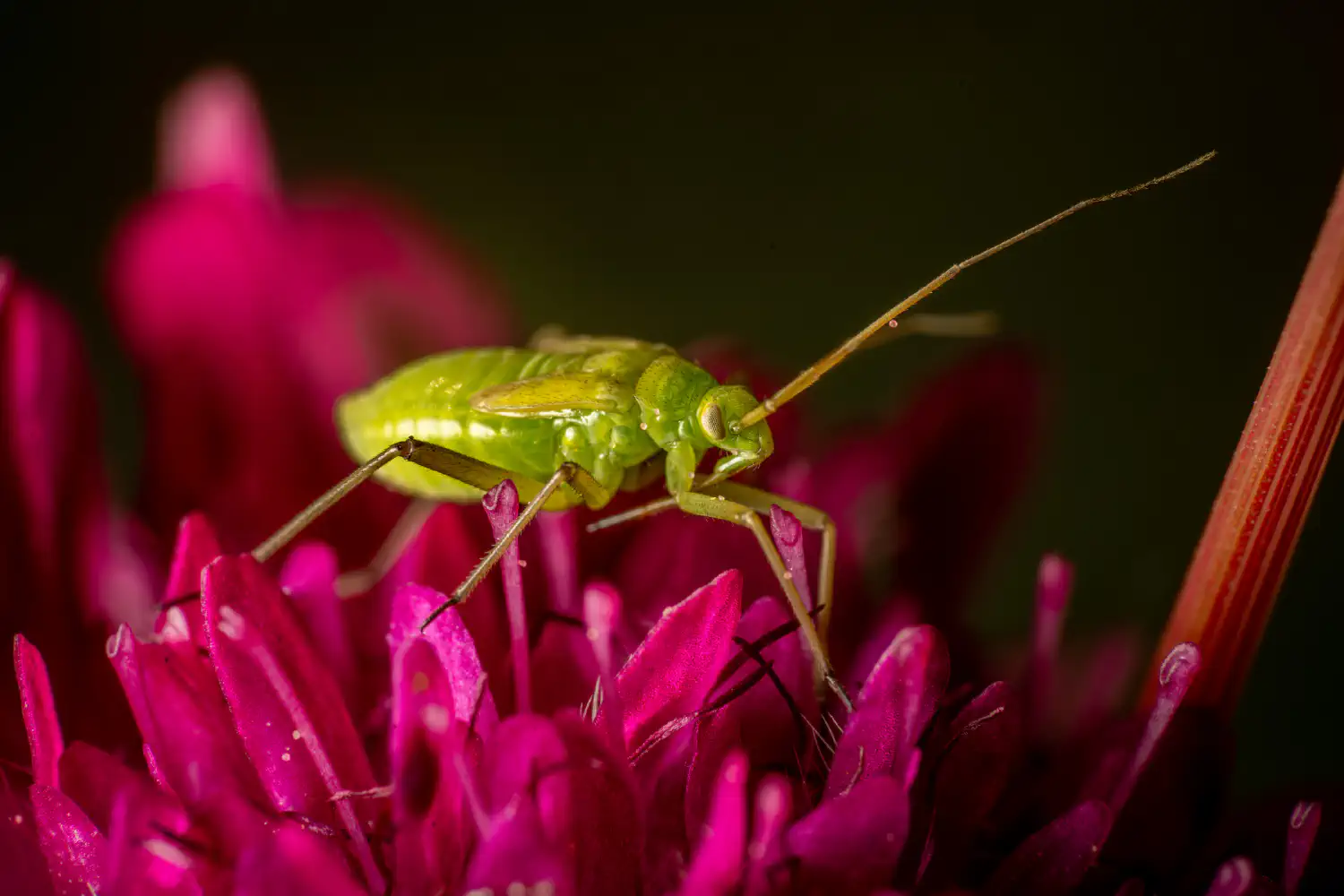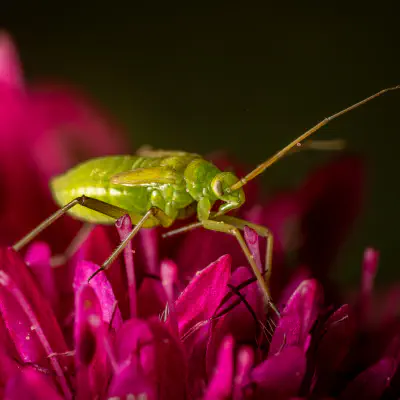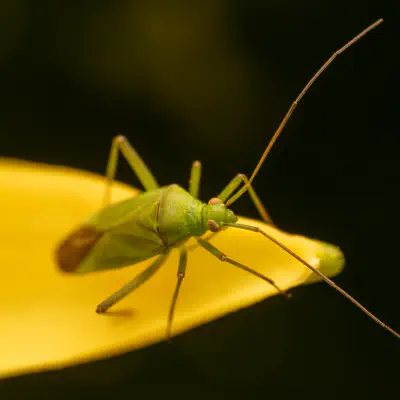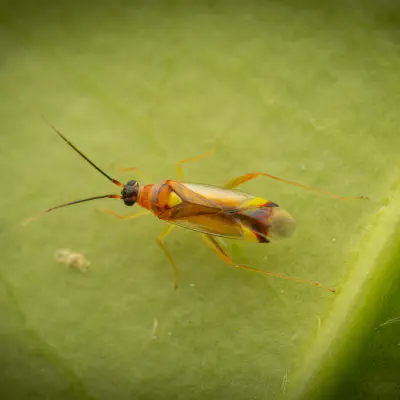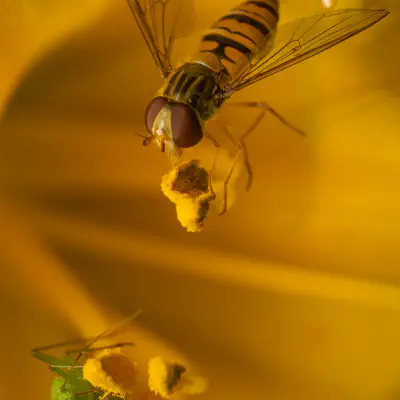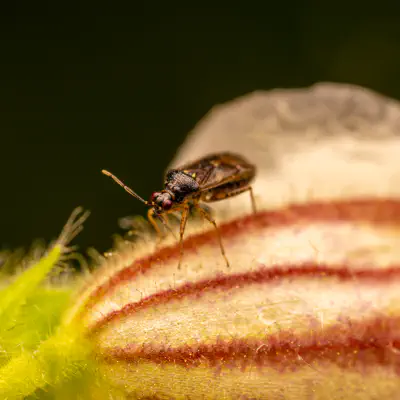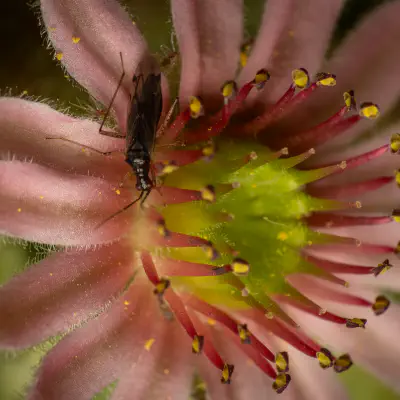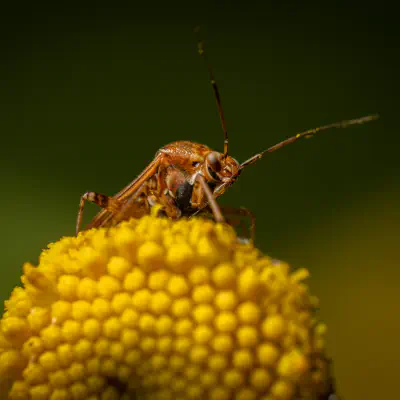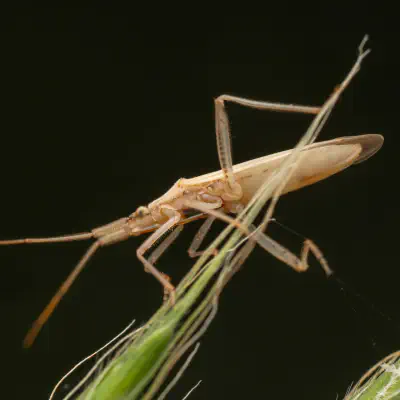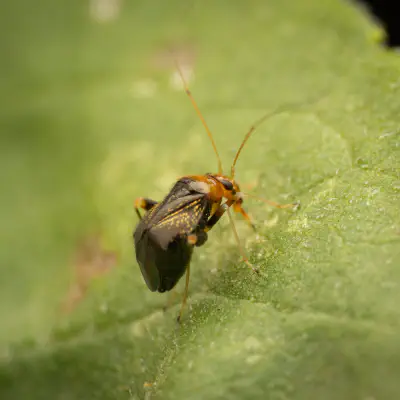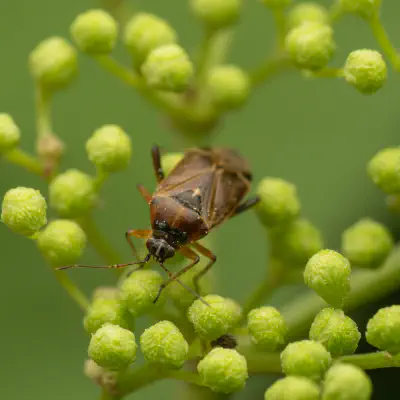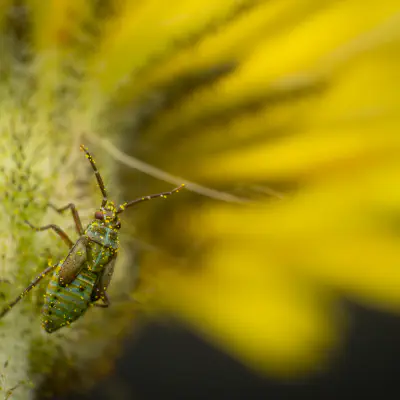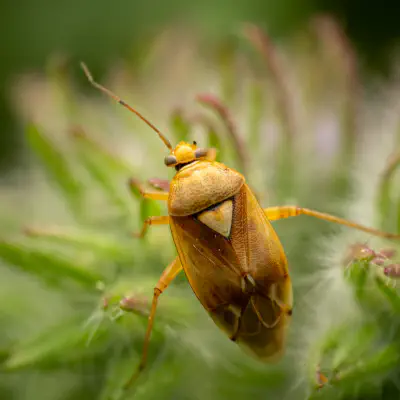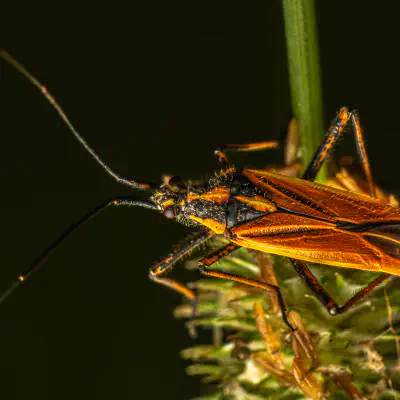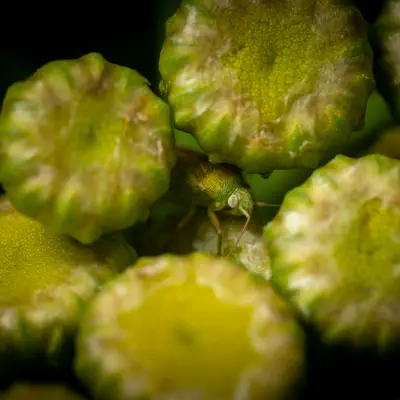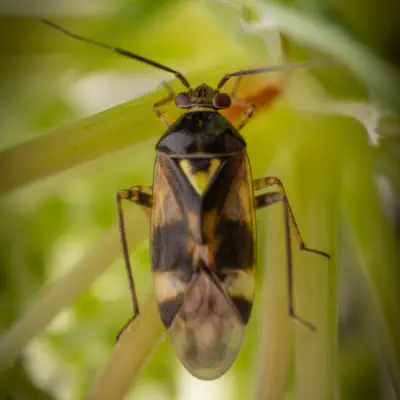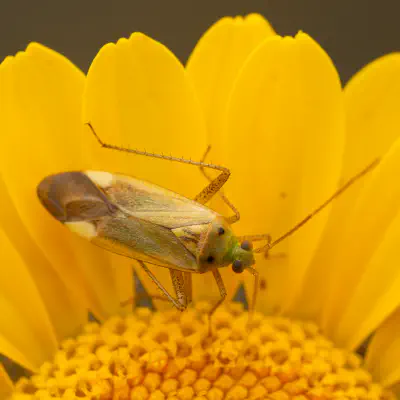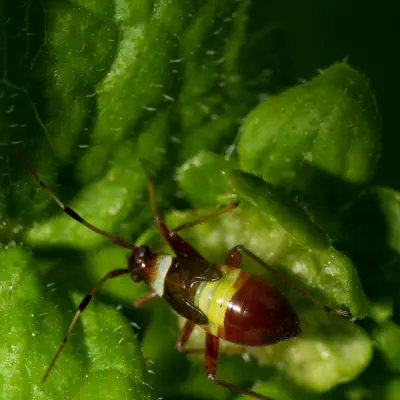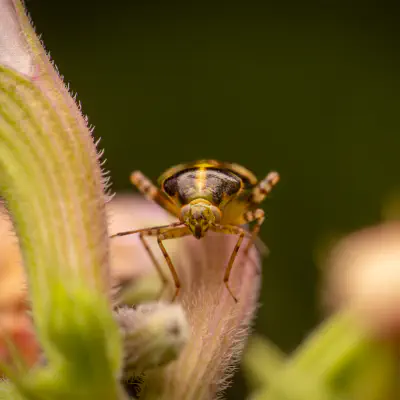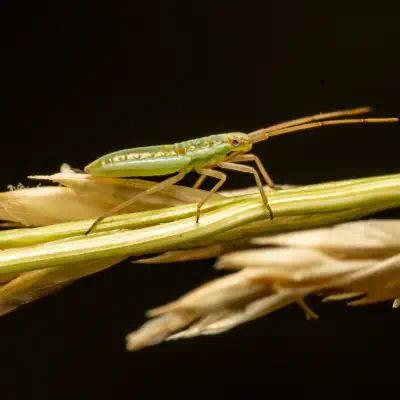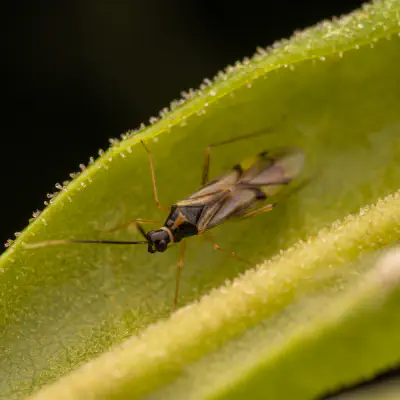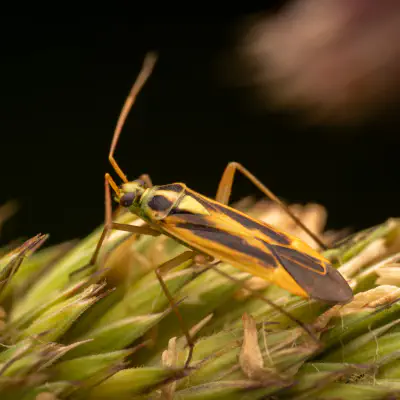Plant Bugs Lat. “Miridae“
The Miridae are a large and diverse insect family at one time known by the taxonomic synonym Capsidae. Species in the family may be referred to as capsid bugs or “mirid bugs”. Common names include plant bugs, leaf bugs, and grass bugs. It is the largest family of true bugs belonging to the suborder Heteroptera; it includes over 10,000 known species, and new ones are being described constantly. Most widely known mirids are species that are…
Hierarchy
Description
Miridae are small, terrestrial insects, usually oval-shaped or elongate and measuring less than 12 millimetres (0.5 in) in length. Many of them have a hunched look, because of the shape of the prothorax, which carries the head bent down. Some are brightly coloured and attractively patterned, others drab or dark, most being inconspicuous. Some genera are ant mimics at certain stages of life. Miridae do not have any ocelli. Their rostrum has four segments. One useful feature in identifying members of the family is the presence of a cuneus; it is the triangular tip of the corium, the firm, sclerotized part of the forewing, the hemelytron. The cuneus is visible in nearly all Miridae, and only in a few other Hemiptera, notably the family Anthocoridae, which are not much like the Miridae in other ways. The tarsi almost always have three segments.
Some mirid species
Lygus bugs (Lygus spp.), including the tarnished and western tarnished plant bugs, are serious pests in the cotton, strawberry, and alfalfa industries. Stenotus binotatus, a minor pest of cereal crops, especially wheat Apple dimpling bug (Campylomma liebknechti) damages apple blossoms and small growing fruits. Mosquito bugs Helopeltis and Afropeltis spp. – that infest various crops including tea, cacao and cotton Honeylocust plant bug (Diaphnocoris chlorionis) damages foliage on honeylocust trees.
Green mirid (Creontiades dilutus) damages many types of field crops. Potato capsid (Closterotomus norwegicus) is a noted pest of potato and clover plants in New Zealand. Deraeocoris nebulosus prefers other insects to plants in its diet, and has been used as a biocontrol agent against mites and scale insects. Dicyphus hesperus sucks sap from various plants and preys on whitefly and red spider mites and can be used in biological pest control.
Systematics
This family includes a large number of species, many of which are still unknown, distributed in more than 1,300 genera. The taxonomic tree includes the following subfamilies and numerous tribes:
Bryocorinae Bryocorini Dicyphini Eccritotarsini Cylapinae Cylapini Fulviini Deraeocorinae Clivinematini Deraeocorini Hyaliodini Saturniomirini Surinamellini Termatophylini Isometopinae Diphlebini Isometopini Mirinae Herdoniini Hyalopeplini Mirini Pithanini Restheniini Stenodemini
Orthotylinae Ceratocapsini Halticini Orthotylini Phylinae Hallodapini Leucophoropterini Phylini Pilophorini
Further reading
Cassis, G.; Schuh, R. T. (2012). “Systematics, Biodiversity, Biogeography, and Host Associations of the Miridae (Insecta: Hemiptera: Heteroptera: Cimicomorpha)”. Annual Review of Entomology. 57: 377–404. doi:10.1146/annurev-ento-121510-133533. PMID 22149267. Wheeler, Alfred George Jr. (2001). Biology of the plant bugs (Hemiptera: Miridae), pests, predators, opportunists. Ithaca, New York: Cornell University Press. ISBN 978-0-8014-3827-1. Google books preview
External links
PBI Plant Bug Index Link to Al Wheeler’s book on the biology of mirids Research on mirids of Southern California at UC Riverside Garden fleahopper on the University of Florida / Institute of Food and Agricultural Sciences Featured Creatures website
Ancestry Graph
Further Information
„Plant Bugs“ on iNaturalist.org
Copyright

This article uses material from the Wikipedia article Miridae the free encyclopedia Wikipedia which is released under Creative Commons Attribution-ShareAlike 4.0 International License). On Wikipedia a list of authors is available.

Little beings in print
Order our calendars and books today!
Compiled with love. Printed sustainably. Experience our little beings even more vividly in print. All our publications are available for a small donation.

